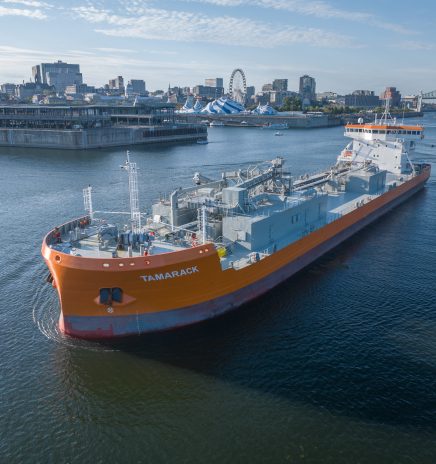Alternative Energy: What’s in It for Us?
My last two articles dealt with the use of alternative fuels and the challenges that are inherent with using each of them. This article looks at building and exploiting alternative energy sources and their impact on the maritime environment. In particular, we’ll look at renewable alternative energy sources, like offshore wind that relies heavily on specialized marine support vessels.
It’s no secret that the offshore wind market in Europe is far more mature than the offshore wind market in North America. This means that in Europe, the vessel designs, as well as the quantity of marine installation and support vessels, are also much more mature. However, in the U.S., it has been determined that a wind turbine installed in U.S. waters is considered a U.S. port. As a result, the majority of these installation and support vessels need to be Jones Act compliant – U.S. flagged.
Identifying Need
The fact that there are multiple available foreign flagged installation and support vessels is of little value for those installation companies who would like to utilize them for work in U.S. wind farms. Further, many of these vessels either already are, or soon will be, ill-equipped to handle the newer, heavier technology turbines and the correspondingly larger blades that are in the installation pipeline.
This shortage of available vessels to perform the expected rush of installations that will be required in the next five-to-10 years and more means that new, improved vessel designs are needed, and needed quickly to be constructed in time to help bring offshore wind farms online in a timely manner.
As in so many industry areas at this time, the technology for offshore wind turbines is changing fast, and the turbines themselves are constantly getting larger, more powerful and, therefore, heavier. This means that Wind Turbine Installation Vessels (WTIVs) need to be larger, the cranes need to lift more weight and reach higher, and the lifting parameters of the jack-up systems need increased as well.
In most cases, these design parameters are well beyond those of the existing installation fleet, Jones Act compliance notwithstanding.
The need for these WTIVs and other support vessels to be available for work is becoming increasingly necessary. Given the current U.S. Administration’s push to encourage the industry’s move towards more environmentally friendly sources of energy, there is an ever-growing sense of urgency.
The Administration has published a goal of having 30,000 megawatts of offshore wind power capacity by 2030. This goal is ambitious and there are significant infrastructure hurdles to be overcome to meet it.
Seeking Wind Business
Despite these challenges, and many more, there is no shortage of prominent maritime companies, along with a number of well-funded investment firms, who want to play in this market. The Bureau of Ocean Energy Management looks to have up to a dozen environmental impact assessments underway this year alone for offshore wind projects. There are even more projects in various planning stages along the East Coast and moving into the Gulf of Mexico.
Even the West Coast is looking to get into the market. Of course, let’s not forget that the Great Lakes are one of the areas with great potential for successful wind farms – on both the U.S. and Canadian side of the border. The long and short of the offshore wind market is that its here to stay, and it is likely to grow even faster than is predicted.
What exactly does this mean for the Great Lakes/St. Lawrence Seaway region?
Short term, were likely to see an increase in specialty cargo traffic from Europe of turbines, blades and other assorted components for wind farm construction; first for land-based units, but soon, offshore units as well. Long term, we can expect to see the design, construction and installation of in-water units, which means we see either new design/build WTIVs and support vessels, or we see the conversion of existing barges or jack-up rigs to support these requirements. The combination of all of this will be another new market segment for designers, equipment suppliers, builders and marine contractors who perform the installations.
Shippers who have been moving this specialized cargo for some years already are likely to see a measurable increase in the movement of these products over the next decade, and perhaps longer. The bottom line for all is that alternative energy sources and the infrastructure needed to develop and distribute this energy is good for the environment, and it’s good for our businesses.

Donjon Marine Acquired by Investment Firm Tallvine
Donjon Marine Co. LLC, which operates a shipyard in the Great Lakes, has been acquired by Miami-based investment firm Tallvine Partners. Donjon Marine was founded in 1964 and operates dredging,... Read More

M/V Tamarack is First Newbuild Cement Ship in the Great Lakes in 20 Years
M/V Tamarack arrived at the Port of Montreal on August 22, completing her maiden transatlantic voyage and marking a major milestone in North American shipping. Owned by Eureka Shipping, a joint... Read More



